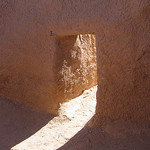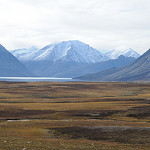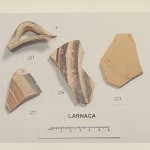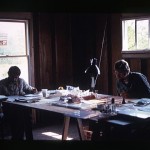As a repository for digital data, tDAR contains a vast amount of resources and tools that can enrich your ongoing research. It houses a library of digital resources that you can find and access to carry your research project from a well-developed proposal to a completed study. Moreover, tDAR maintains a powerful set of tools that enable you to integrate multiple data sets from different sources and to collaborate with other researchers to create large aggregated data sets.
The digital resources in tDAR can be used to address a wide array of archaeological research topics.
- Search the digital library for documents, images, and data sets that can enhance your current research.
- Find and download documents and images related to your research.
- Find both active and legacy data sets from archaeological projects throughout the world.
- Download the documents, images, and data sets you need to complete your research project.
The digital tools that tDAR provides can be used to conduct research with your digital data.
- Integrate your data with data from other projects in tDAR.
- Collaborate with other researchers by sharing your data.
- Work with other researchers to integrate all of your data into a single database.
Examine expansive prehistoric settlement across Central Arizona
You can quickly locate vast amounts of information on the prehistoric settlement patterns and demography of both the Phoenix Basin and the nearby Verde Valley in Arizona.

- The Phoenix Basin Archaeology: Intersections, Pathways Through Time project contains final reports from 11 different archaeological projects along a prehistoric canal system in the heart of the Phoenix Basin.
- The Pueblo Grande: Monitoring, Testing, and Data Recovery Projects collection houses the results of 9 separate projects that Soil Systems, Inc. completed at this central platform mound village.
- The Lower Verde Archaeological Project collection presents the data-rich volumes and synthetic final report that Statistical Research, Inc. (SRI) completed for the Bureau of Reclamation Phoenix Area Office’s four year long compliance project throughout the lower Verde drainage.
Investigate Norse expansion across the Atlantic
You can access comparable feature and midden data from sites that North Atlantic Biocultural Organization’s researchers excavated in Norway, Northern Iceland, and Greenland.
- The North Atlantic Biocultural Organization’s (NABO) project directs users to field reports and data from excavations across Norway, Iceland, and Greenland.

Compare prehistoric and early historic adaptations in Upstate New York
You can access and compare records and large data sets pertaining to Iroquoian settlement throughout upstate New York.
- The Iroquoian Ceramic Data project houses William Engelbrecht’s ceramic data for over 10,000 Iroquoian vessels from 70 different sites.
- The England’s Woods project contains data and images from this Mohawk Iroquois site, which was excavated as part of the Mohawk Valley project.
- The Cayadutta project presents comprehensive information on work conducted at this Mohawk Iroquois site.
Research ceramic provenance and exchange patterns in parts of the Mediterranean
You can access and compare the Lawrence Berkeley National Laboratory’s ceramic compositional data for large numbers of pottery vessels throughout the Mediterranean world.

- The Lawrence Berkeley National Laboratory offers a large collection of neutron activation data and photographs on Cypriot, Greek, and Egyptian ceramics.
- Compare the Lawrence Berkeley National Laboratory’s compositional data of Cypriot ceramics.
- Examine the Lawrence Berkeley National Laboratory’s photographs of Cypriot biochrome.
Collaborate with other researchers to create multi-site and even multi-regional data sets
You can use tDAR to share data among project members in collaborative efforts, and even use tDAR’s data tools to integrate project members’ data sets.

- The Long Term Vulnerability and Transformation Project is using tDAR to aggregate settlement and demographic data from areas throughout the Southwest.
- The NSF & NEH/JISC Trans-Atlantic Faunal Working Groups is using tDAR to integrate large faunal data sets.
- The Southwest Mortuary Database Project is using tDAR to aggregate legacy mortuary data sets from multiple areas in the American Southwest.